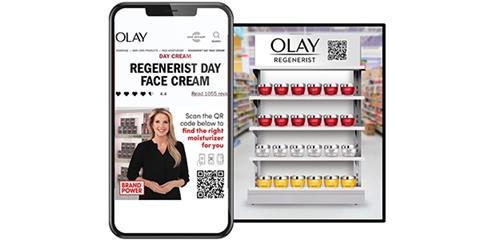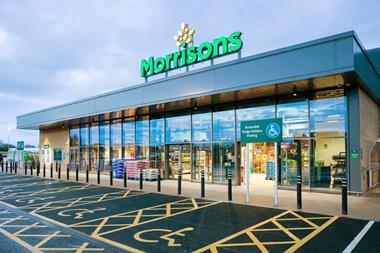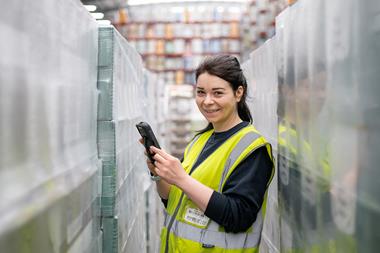In an evolving world, what is the opportunity for Augmented Reality for retailers? And what are the most common misconceptions? Find out how you can boost your sales with AR.
The word marketing derives from the Latin word mercatus, which means marketplace. A marketplace teeming with products for sale, traders promoting them and creating inviting spaces, and potential customers in abundance. And Augmented Reality (AR) activations at point of sale (POS) should be no different.
What is the opportunity via AR at POS?
To create virtual environments that replace legacy POS materials that have been, and still can be, incredibly expensive. Screens, stands, entire installations and so on, multiplied by as many locations that you need to occupy.
Further multiplied, at times, by how long you need to pay to be there! Obviously, there are some other benefits vs cost savings and more sexy things we could talk about, but this the essence of the opportunity. To replace physical scenarios with virtual.
And the output of this opportunity should be to sell.
Augmented Reality misconceptions
Misconception number 1: “It’s about the technology.”
No, it’s not about the technology and further we as a service provider understand it is also not ownable. It would be like saying “We are really good with the internet and stuff”. Tech is the delivery device and enabler. So yes, it can be cool and it’s important but only from that perspective, as the enabler. Don’t get caught up in shiny baubles.
Misconception number 2: “It must be entertaining and have a wow factor.”
Don’t fall into the trap of assuming the role of a director on a set for a Disney animated series? Your job is to sell product and this must be at the forefront of all of your planning and activations, over and above giving people a minute or two of enjoyment. By then your product may have been delisted as the necessary next steps to buy your product won’t have been taken. Keep it simple.
Misconception number 3: “People will scan the QR code.”
No, they won’t. Why would they? Why would you? This is perhaps the most important misconception, and the most important opportunity. It also requires the most creativity, somewhat ironically. Of course, a QR code is only one form of activation but that is for another time.
Misconception number 4: “This is not about ROI.”
Anyone remember the 100’s of billions wasted on digital media over about 15 years before the big spenders finally said: “Time’s up, guys.” Things need to be done with an outcome in mind, not just for the sake of doing it or because it seems cool at the time. Everything should be measured, and it should be measured via sales, and sales only.

OK so what we do to win at shelf and sell, using Augmented Reality?
Brand Power has some theories and they won’t apply to everyone, however after surviving via selling to the world’s largest fmcgs for over 35 years and they in turn selling enormous amounts of products, these would be our suggestions for selling using AR, specifically in this instance “at shelf”, wherever that shelf may be.
1. Get their attention
If you don’t get consumers to engage, then all is for nought. Spend a lot of time and potentially money on this. It doesn’t need to be extremely fancy. For example, we have a system we use for sweepstakes/prize draws we call Learn and Win (experience the content, answer some questions about said content and that is your entry cost completed). A simple example of the best response we ever had, out of 100’s of campaigns and literally millions of entries, was: Win one of 100 ice cream makers. It beat cars, holidays etc. Why? It gave people a chance. One chance at a car, or 100 chances at an ice cream maker?
2. Talk with your retail partner/s, immediately
Even with the right idea for getting consumer’s attention – if you can’t activate it or know how much it will cost, it will, again be for nought. If you can’t get the consumer’s attention usually via simple physical cues to activate your experience at POS (which the retailer/s own) then again, you are dead in the water. Obviously keep in mind the activation needs to be beneficial for the retailer/s.
3. Quickly create an immersive world, but it needs to be simple and understandable
We think this one speaks for itself but as a simple example, the biggest mistake we made with our first pilot for a major brand in the USA was not to tell people they need to keep their phone facing front. The immediate reaction after a scan is to drop the phone and look down at it, and therefore they had no chance of the next step.
4. Engage
What we mean here is have them pick up the product. Stats from our clients indicate people are 50% more likely to purchase after they literally pick up the product. So obviously an important consideration with your approach and content.
5. Educate
You have their attention. Is an orange about to explode and leprechauns fly out? Or are you going to give them the information they need to take that product to the checkout? Who, what, where, why, when? Quickly. This, as a small aside, can also help avoid inaccurate product use. And this is a real story… consumer review: “This product didn’t clean my clothes anywhere near what I expected”. Response: “Well, that’s because they are dishwashing tablets (pods).”
6. Evaluate your content
What do have and what do you need? Will it work to deliver upon the objective?
7. Consider third party endorsement
An expert, a platform, other consumers. This not only adds credibility but it saves time, and therefore money, by being able to get straight to the point.
We have not looked at many of the technological options or the creative approaches as they relate to AR and in this instance, at shelf, but we believe principles drive everything and the rest is detail. Not that there is not devil in the detail, far from it, but they are all quite unique.
So in summary, what to think about with AR in the marché? Trial is King. Repeat purchase is the Golden Goose. Sell or else.
To schedule an AR workshop with our experts to power your brand. contact: james.sopp@brandpower.com or find out more here





















